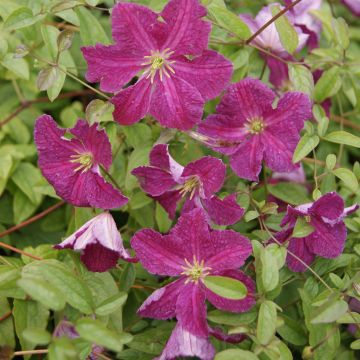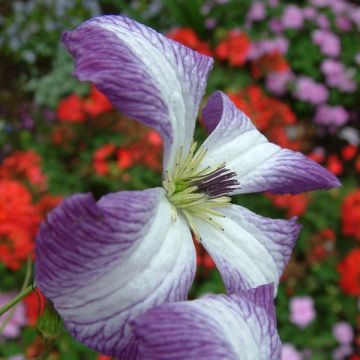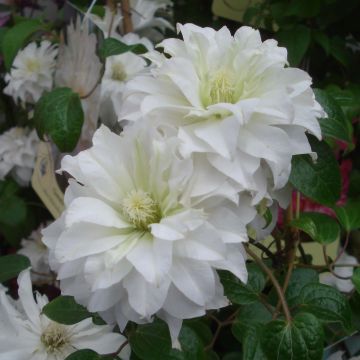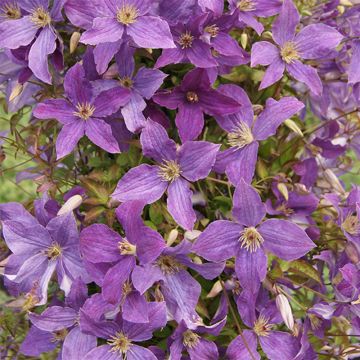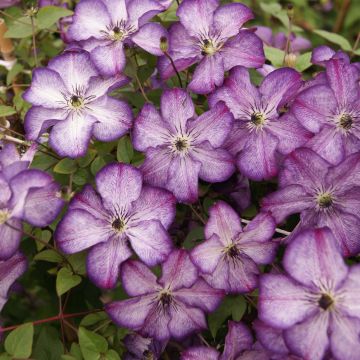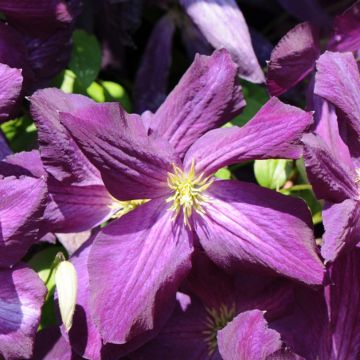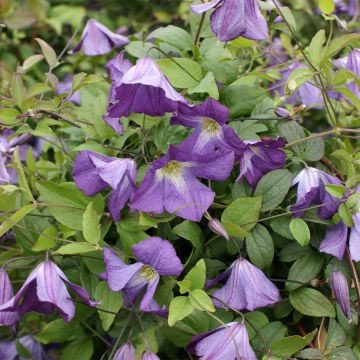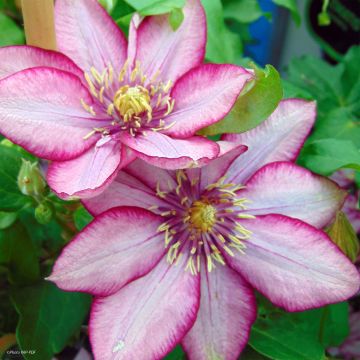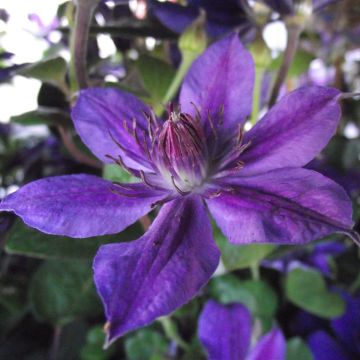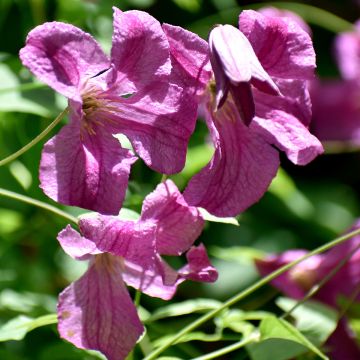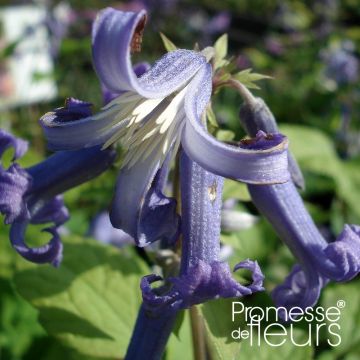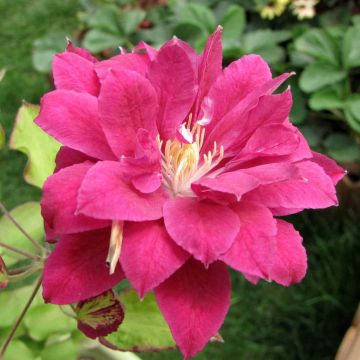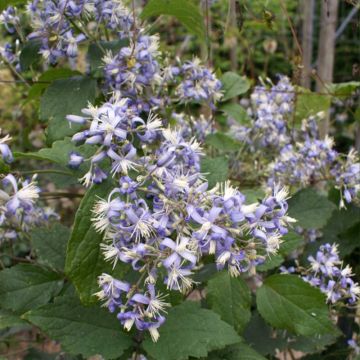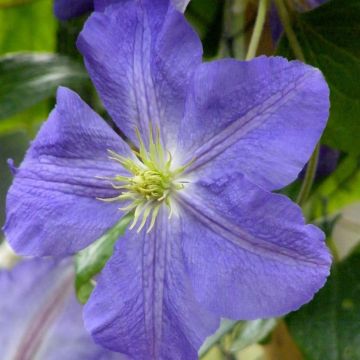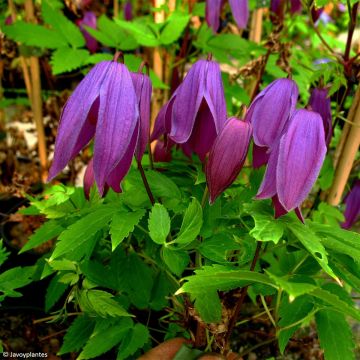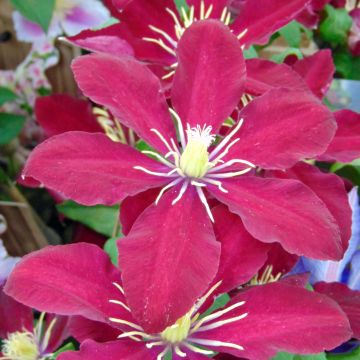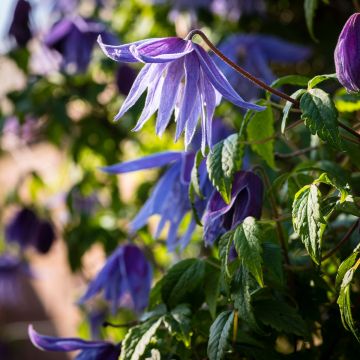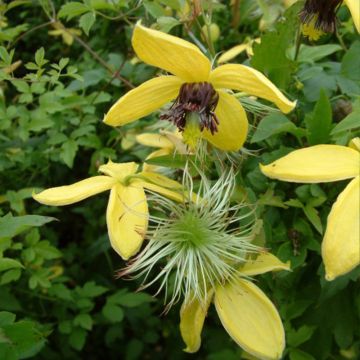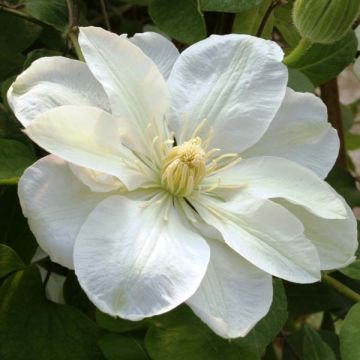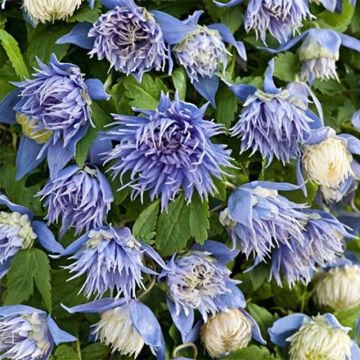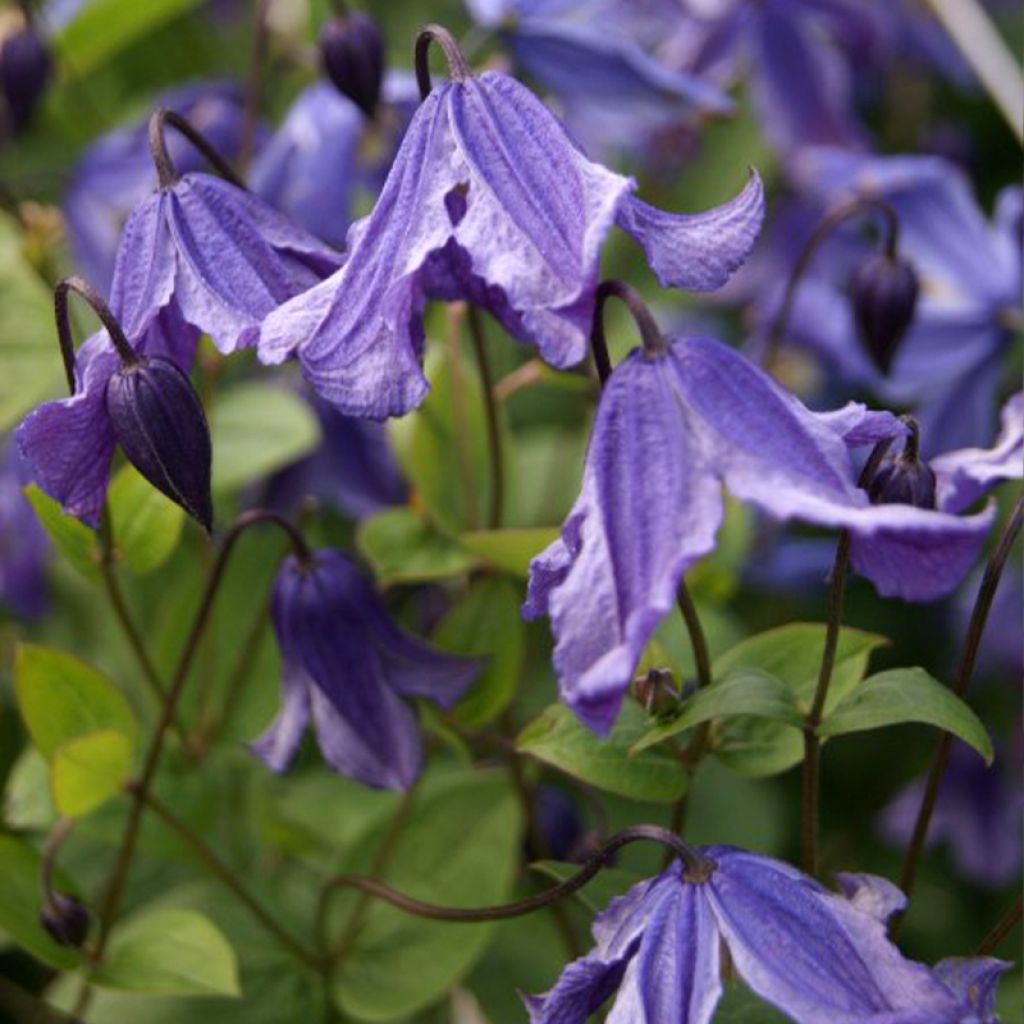

Clematis integrifolia x viticella Eriostemon
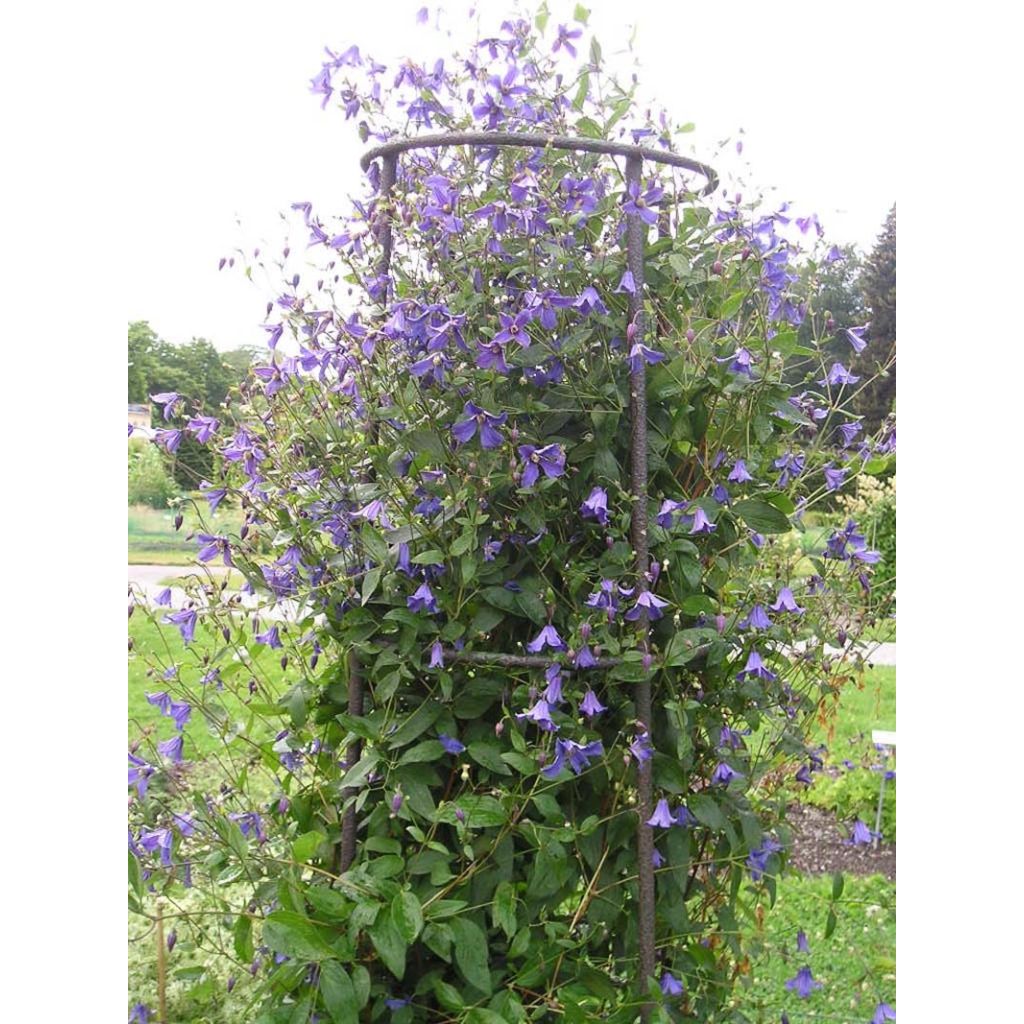

Clematis integrifolia x viticella Eriostemon
Clematis integrifolia x viticella Eriostemon
Clematis integrifolia x viticella Eriostemon
This clematis is full of promises. For its first year, it measures over 2m (7ft). I can't wait to see it bloom.
Julie, 27/05/2023
This item cannot be shipped to the selected country
Delivery charge from €5.90
More information
Schedule delivery date,
and select date in basket
This plant carries a 6 months recovery warranty
More information
We guarantee the quality of our plants for a full growing cycle, and will replace at our expense any plant that fails to recover under normal climatic and planting conditions.
From €5.90 for pickup delivery and €6.90 for home delivery
Express home delivery from €8.90.
Does this plant fit my garden?
Set up your Plantfit profile →
Description
The Clematis Eriostemon is a very old hybrid variety that is sometimes likened to the Clematis (x) diversifolia Hendersonii, which is difficult to distinguish from it. It is both a bushy perennial plant and a small climber. Its slightly scented flowers bloom throughout the summer, in the form of pendulous bells with a deep blue-violet colour that shines in the sun. Its feathery and silky fruits are an adornment for the garden during the winter. Hardy, highly floriferous, and resistant to wilt disease, it lounges among its neighbours and seems to thrive on the air. Plant it near a bush or in a perennial bed, and it will surprise you! This clematis, unlike any other, adapts to all regions and also grows well in pots!
Clematis belong to the buttercup family. They can be found in both hemispheres, especially in Europe, the Himalayas, China, Australia, and North and Central America. The 'Eriostemon' variety was obtained in England in 1835 by crossing Clematis integrifolia with C. viticella. Its first parent is a herbaceous species with a woody stump that is highly resistant, originating from thickets in central Europe, Russia, and China. The second parent, native to southern Europe, is a species particularly resistant to diseases and rather dry soils. It is therefore not surprising that the Eriostemon clematis proves to be robust and adaptable, perfectly perennial and hardy.
Semi-woody and not very climbing, the Eriostemon clematis develops slender, purple-tinged stems from its stump in spring, intertwining into a bushy mass that reaches a height and width of 1.50 to 2 meters (5 to 7 feet). It clings to its support or neighboring plants via petioles transformed into tendrils. The flowering period is from June to September if the soil remains slightly moist. During dry summers, it will take a rest in August and resume in September. The solitary, pendulous, star-shaped flowers have 4 petals and measure 6-7 cm (2-3in) in diameter. They have fairly wide petals, often curved at the edges, with a very bright blue-violet colour. The center of the flower is adorned with cream-yellow to green stamens. The flowering is followed by decorative feathery, silver-gray fruits that persist until winter. The deciduous leaves are pinnate, with lanceolate leaflets and acute tips, and are glabrous, with a fairly deep green colour. The above-ground vegetation dries up in winter and should be pruned in March.
Plant it alongside your perpetual roses to accompany their long summer flowering and fill in their sometimes bare base. The association with the small apples of ornamental apple trees (Malus 'Everest' or 'Van Eseltine') is also very charming, as is the combination with the orange bells of the Clematis 'Orange Peel'. Clematis represents a genus rich in diversity, with varieties available in all colours, forms, and sizes. Simply choose the ones that will flourish in your climate. Take advantage of their easy cultivation to give your garden a romantic and bohemian touch. The amazing Eriostemon clematis will even thrive in mountainous regions and in the Mediterranean. Thanks to its semi-herbaceous growth habit, it will thrive perfectly in a pot on a balcony or in a bed invaded by perennial peas, variegated ivy, and small-flowered periwinkles.
Report an error about the product description
Clematis integrifolia x viticella Eriostemon in pictures


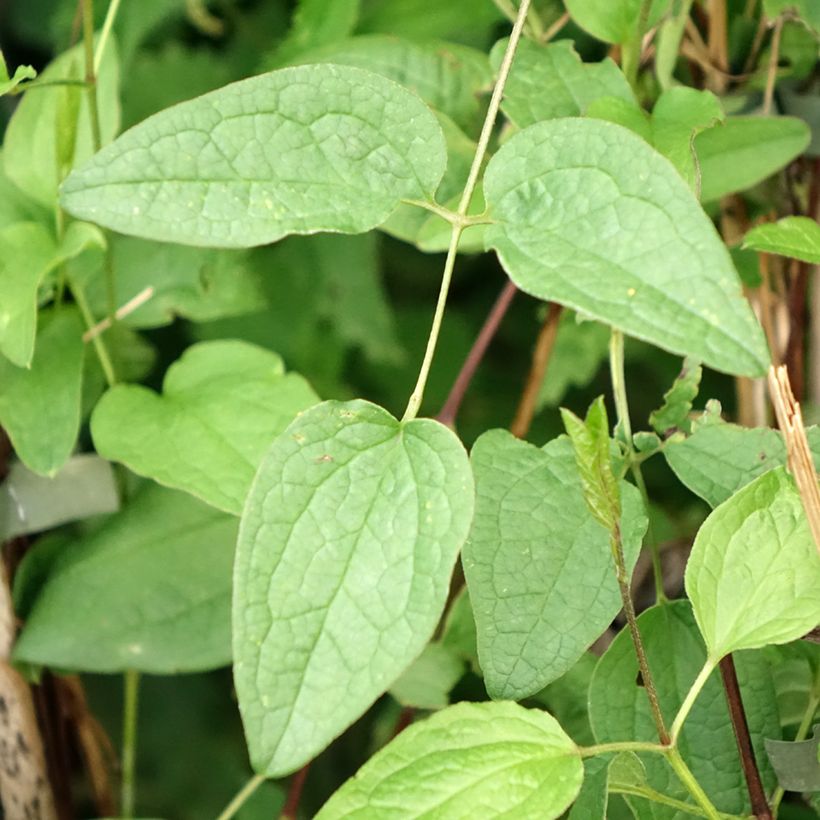

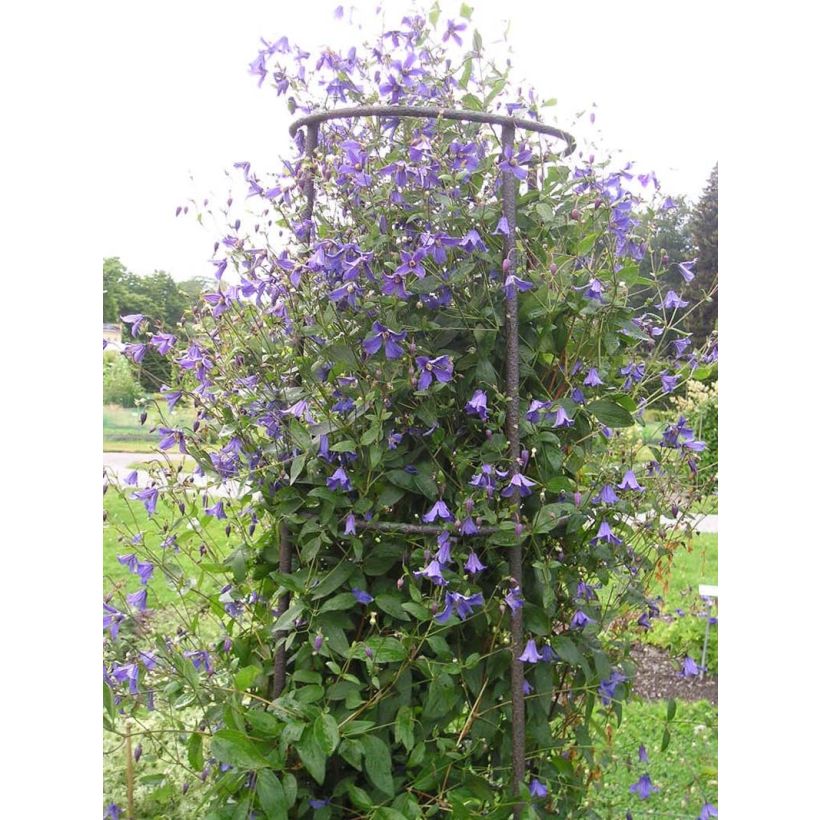

Plant habit
Flowering
Foliage
Botanical data
Clematis
integrifolia x viticella
Eriostemon
Ranunculaceae
Cultivar or hybrid
Other Clematis Viticella
Planting and care
The 'Eriostemon' Clematis will appreciate a sunny or semi-shady position near a tree or bush, especially in our warm regions. Plant it in well-worked soil, rather fertile, enriched with leaf compost, especially well-drained, shading the roots and the base of the vine-plant (with a flat tile for example). In general, the clematis wilts in soil that is too wet, but the varieties derived from C. viticella and C. integrifolia seem to be spared and are generally very easy to grow in ordinary soil, simply well loosened and well drained. Install it by covering the planted clod at an angle of 3 cm (1in) with soil, in soil worked to a depth of 20 cm (8in), lightened with good compost and coarse sand. After planting, prune the clematis stems to about 30 cm (12in) from the base above a nice pair of buds. In the first few weeks, water regularly. However, be careful not to let the water stagnate as this can cause fungus to develop at the collar. Mulch all clematis in February with garden compost or well-decomposed manure, avoiding direct contact with the stems. Train the stems, without squeezing them, until the plant clings to itself. Clematis, especially herbaceous ones, also like to grow freely on neighboring plants. Prune close to the ground in February-March.
Voles and grey worms can attack clematis and devour the stems, just like snails that enjoy young shoots in spring. Aphids and greenhouse whiteflies are also potential parasites of clematis.
Planting period
Intended location
Care
-
, onOrder confirmed
Reply from on Promesse de fleurs
Clematis
Haven't found what you were looking for?
Hardiness is the lowest winter temperature a plant can endure without suffering serious damage or even dying. However, hardiness is affected by location (a sheltered area, such as a patio), protection (winter cover) and soil type (hardiness is improved by well-drained soil).

Photo Sharing Terms & Conditions
In order to encourage gardeners to interact and share their experiences, Promesse de fleurs offers various media enabling content to be uploaded onto its Site - in particular via the ‘Photo sharing’ module.
The User agrees to refrain from:
- Posting any content that is illegal, prejudicial, insulting, racist, inciteful to hatred, revisionist, contrary to public decency, that infringes on privacy or on the privacy rights of third parties, in particular the publicity rights of persons and goods, intellectual property rights, or the right to privacy.
- Submitting content on behalf of a third party;
- Impersonate the identity of a third party and/or publish any personal information about a third party;
In general, the User undertakes to refrain from any unethical behaviour.
All Content (in particular text, comments, files, images, photos, videos, creative works, etc.), which may be subject to property or intellectual property rights, image or other private rights, shall remain the property of the User, subject to the limited rights granted by the terms of the licence granted by Promesse de fleurs as stated below. Users are at liberty to publish or not to publish such Content on the Site, notably via the ‘Photo Sharing’ facility, and accept that this Content shall be made public and freely accessible, notably on the Internet.
Users further acknowledge, undertake to have ,and guarantee that they hold all necessary rights and permissions to publish such material on the Site, in particular with regard to the legislation in force pertaining to any privacy, property, intellectual property, image, or contractual rights, or rights of any other nature. By publishing such Content on the Site, Users acknowledge accepting full liability as publishers of the Content within the meaning of the law, and grant Promesse de fleurs, free of charge, an inclusive, worldwide licence for the said Content for the entire duration of its publication, including all reproduction, representation, up/downloading, displaying, performing, transmission, and storage rights.
Users also grant permission for their name to be linked to the Content and accept that this link may not always be made available.
By engaging in posting material, Users consent to their Content becoming automatically accessible on the Internet, in particular on other sites and/or blogs and/or web pages of the Promesse de fleurs site, including in particular social pages and the Promesse de fleurs catalogue.
Users may secure the removal of entrusted content free of charge by issuing a simple request via our contact form.
The flowering period indicated on our website applies to countries and regions located in USDA zone 8 (France, the United Kingdom, Ireland, the Netherlands, etc.)
It will vary according to where you live:
- In zones 9 to 10 (Italy, Spain, Greece, etc.), flowering will occur about 2 to 4 weeks earlier.
- In zones 6 to 7 (Germany, Poland, Slovenia, and lower mountainous regions), flowering will be delayed by 2 to 3 weeks.
- In zone 5 (Central Europe, Scandinavia), blooming will be delayed by 3 to 5 weeks.
In temperate climates, pruning of spring-flowering shrubs (forsythia, spireas, etc.) should be done just after flowering.
Pruning of summer-flowering shrubs (Indian Lilac, Perovskia, etc.) can be done in winter or spring.
In cold regions as well as with frost-sensitive plants, avoid pruning too early when severe frosts may still occur.
The planting period indicated on our website applies to countries and regions located in USDA zone 8 (France, United Kingdom, Ireland, Netherlands).
It will vary according to where you live:
- In Mediterranean zones (Marseille, Madrid, Milan, etc.), autumn and winter are the best planting periods.
- In continental zones (Strasbourg, Munich, Vienna, etc.), delay planting by 2 to 3 weeks in spring and bring it forward by 2 to 4 weeks in autumn.
- In mountainous regions (the Alps, Pyrenees, Carpathians, etc.), it is best to plant in late spring (May-June) or late summer (August-September).
The harvesting period indicated on our website applies to countries and regions in USDA zone 8 (France, England, Ireland, the Netherlands).
In colder areas (Scandinavia, Poland, Austria...) fruit and vegetable harvests are likely to be delayed by 3-4 weeks.
In warmer areas (Italy, Spain, Greece, etc.), harvesting will probably take place earlier, depending on weather conditions.
The sowing periods indicated on our website apply to countries and regions within USDA Zone 8 (France, UK, Ireland, Netherlands).
In colder areas (Scandinavia, Poland, Austria...), delay any outdoor sowing by 3-4 weeks, or sow under glass.
In warmer climes (Italy, Spain, Greece, etc.), bring outdoor sowing forward by a few weeks.

































